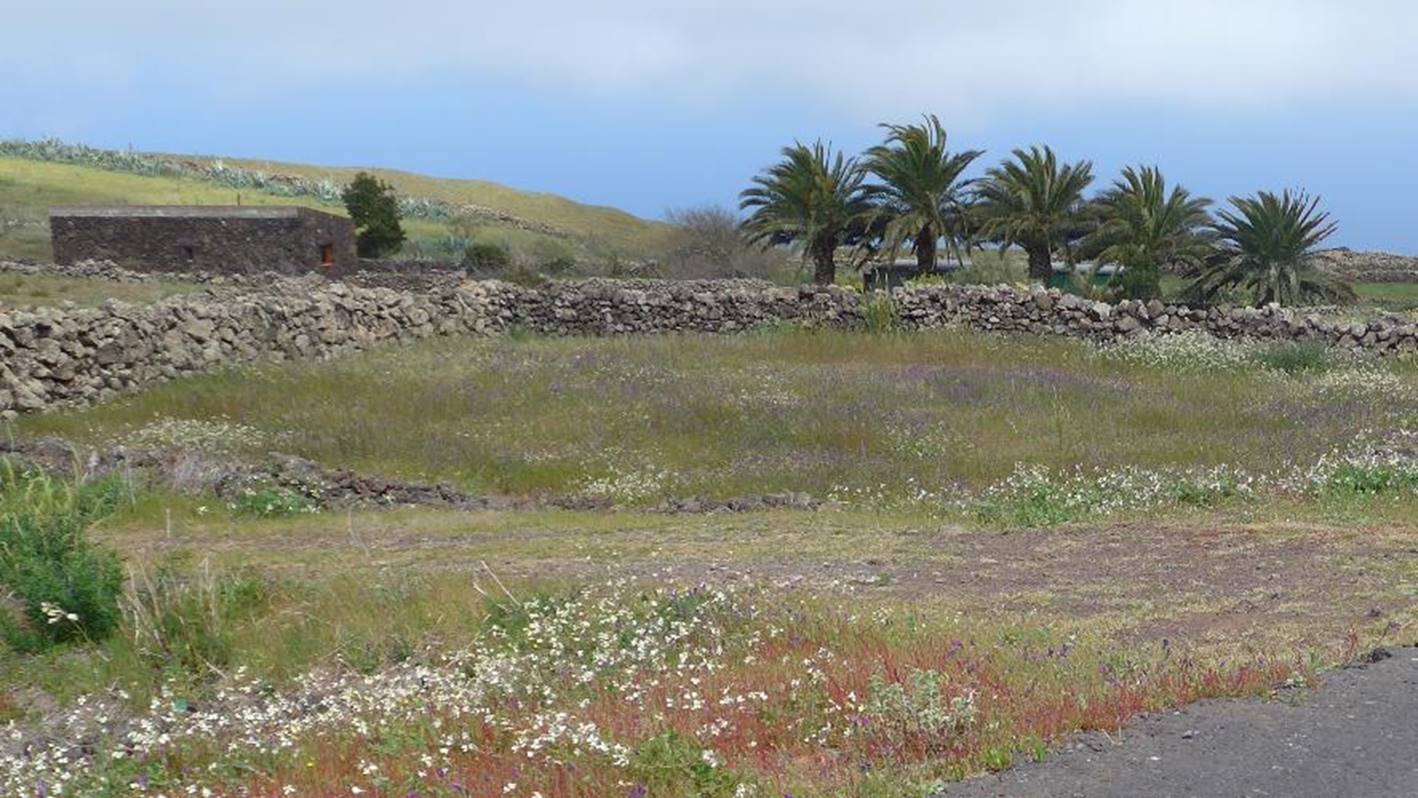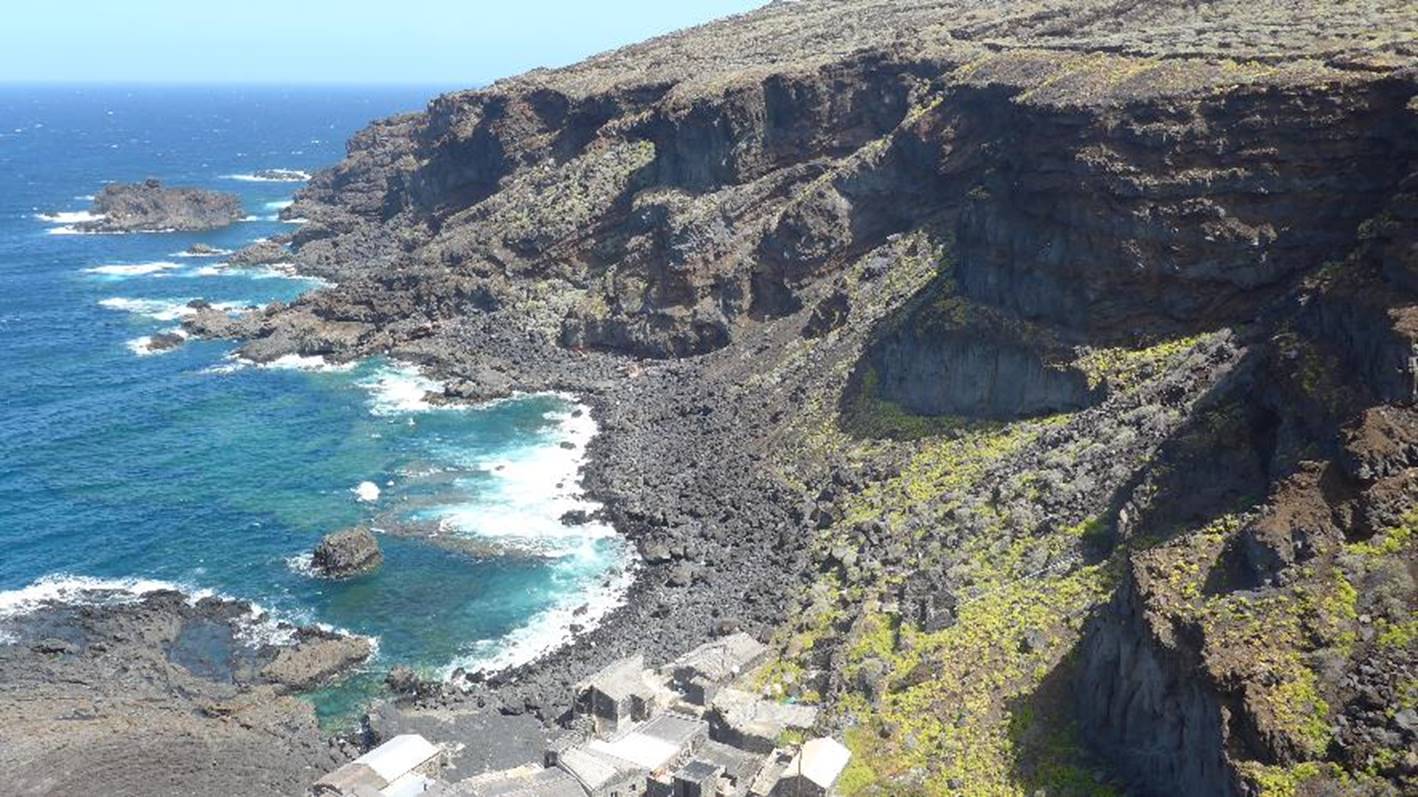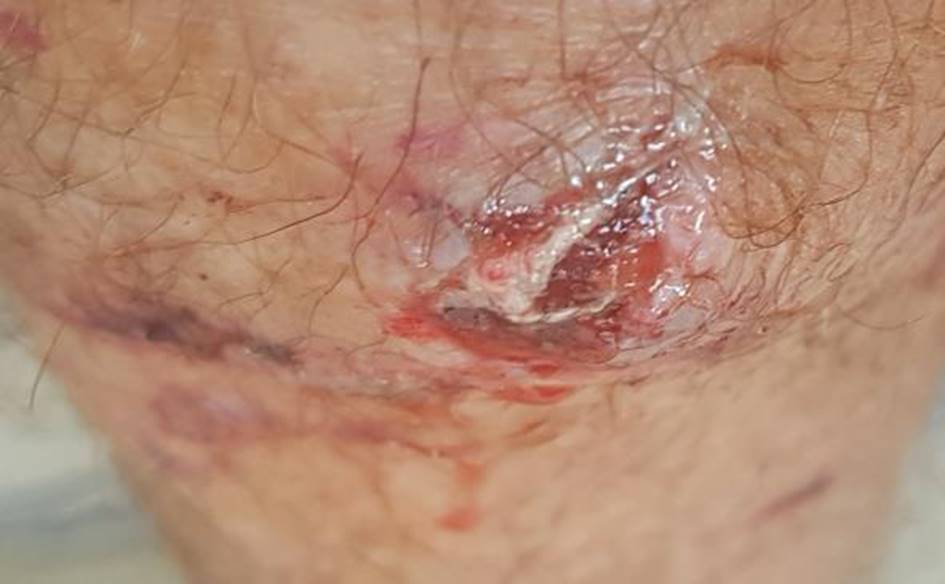El Hierro

27:38.421N 17:58.855W Sat 23rd Mar 2019 Another gem of an island “at the end of the world”, as Columbus’ crew viewed it when they sailed past en-route to the unknown. There’s a lot to see here with so many distinctive areas for a relatively small island. There are barren, raw volcanic “badlands”, beautiful pine forests, rocky, windswept coastlines with the occasional, surprisingly sheltered cove, a dramatic central precipitous escarpment sweeping down to a broad plain below, extraordinary wind sculpted juniper trees and rolling upland meadows at present covered in spring wildflowers. We have explored most of it in our time here, but sadly without doing any of the walking which we were so looking forward to. Unfortunately David was bitten quite badly by a local farmer’s dog whilst out running up the hills behind the harbour here. As a result, he wasn’t able to walk without it hurting for nearly 2 weeks, so we have been restricted to driving around (in an automatic so he didn’t have to use his left leg). At times we felt like real oldies, stepping out of the car briefly to view a site before pottering onwards! We did enjoy visiting the reconstructed site of a centuries old stone village and learning more about the volcanic history and structures of the island. Then there is the island’s status as a Unesco Geopark and its recent plan to become the world’s first energy self-sufficient island. To this end it has erected 5 large wind turbines to take advantage of the trade winds that blow strongly here so much of the time. Excess power is stored in a “pumped hydro” scheme where the water flows back down the mountain when the wind isn’t blowing to generate electricity. Our “safe” berth in La Restinga has actually proved quite challenging in that we seem to have the most disturbed spot in the almost continuous trade winds and we have worn through a couple of fender ropes bouncing on and off the pontoon. It’s been worth it of course, for the chance to get to know this fascinating place, but the almost relentless wind has also made it hard to plan our departure. The mighty seas outside the harbour have looked pretty daunting a lot of the time, but we hope to find a quieter spell of weather early next week to start our sail back east. Meanwhile, we watch the local fishing boats potter out every day, despite the winds, as they take advantage of the totally flat seas which lie just to our west and produce the Mar de las Calmas (Sea of Calm). It really is quite amazing to see how the very rough waters suddenly subside into what looks more like a sunny lake and you can understand how that, combined with some stunning underwater volcanic scenery (last erupted in 2011) and abundant, protected sea life, make it one of Europe’s top dive sites. The local “malpais” (lava badlands):
“El Golfo”, where an ancient volcano slipped into the sea:
Pine forest:
Pasture & wildflowers:
Wind blasted junipers:
Looking down at a seasonal village built on a lava flow:
It looks like there is a brief pause in the strong NE trade winds this week, so we can start back eastwards to find somewhere safe to leave the boat for our planned trip back to the UK. Assuming the leg permits it. Look away now if you don’t want to see the wound…
|







